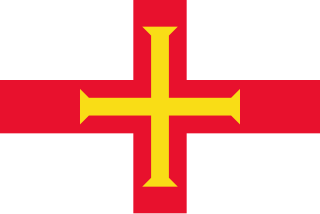
Guernsey is the second-largest island in the Channel Islands, located 27 miles (43 km) west of the Cotentin Peninsula, Normandy. It is the largest island in the Bailiwick of Guernsey, which includes five other inhabited islands and many small islets and rocks. The Bailiwick has a population of 63,950, the vast majority of whom live on Guernsey, and the island has a land area of 24 square miles (62 km2).

The history of Guernsey stretches back with evidence of Neolithic occupation, followed by Roman occupation. Christianity was brought to Guernsey by St Sampson.

St. Peter Port is a town and one of the ten parishes on the island of Guernsey in the Channel Islands. It is the capital of the Bailiwick of Guernsey as well as the main port. The population in 2019 was 18,958.

Fort Grey, colloquially known as the "cup and saucer", is a Martello tower located on a tidal rock in Rocquaine Bay in Saint Peter, Guernsey on the west coast of the island.

Saint Martin is a parish in Guernsey, The Channel Islands. The islands lie in the English Channel between Great Britain and France.

Saint Andrew is located in the centre of Guernsey and as such is the only parish on the island to be landlocked.

St Peter's, known officially as Saint Pierre du Bois, is a parish in Guernsey. It is the centre for the Guernsey Western Parishes which includes Torteval, St Saviour's and the Forest.
Braye Harbour is the main harbour on the north side of the island of Alderney, in the Channel Islands, a dependency of the British Crown. A 3,000 feet (910 m) breakwater was built by the Admiralty to protect the Navy in the 19th century shelters Braye Harbour. The harbour faces out onto the Swinge, which is part of the English Channel, and it is at Braye that most of the island's freight comes in. Braye is more or less a suburb of St Anne, the island capital; the centre of St Anne lies approximately 1 mile from the harbour.
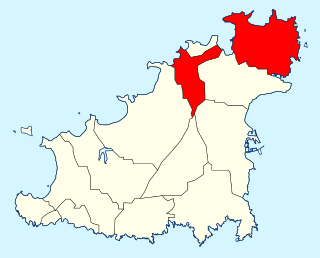
Vale is one of the ten parishes of Guernsey in the Bailiwick of Guernsey, Channel Islands.
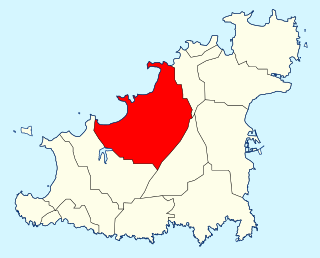
Castel /kætel/ is the largest parish in Guernsey in terms of area.

St Saviour is one of the ten parishes of Guernsey. It is situated on the west coast of the island, west of the parish of Castel, east of St Pierre du Bois, and south of Perelle bay.
St. Michel du Valle is the parish church of Vale, Guernsey.
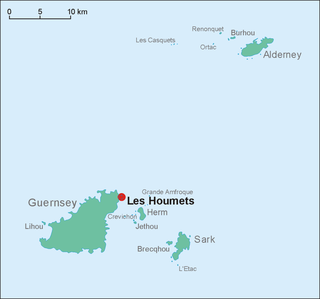
Les Houmets are to the east of Guernsey in the Channel Islands. Their name derives from a diminutive of hou, a Norman/Guernésiais word meaning islets. They are tidal islands.
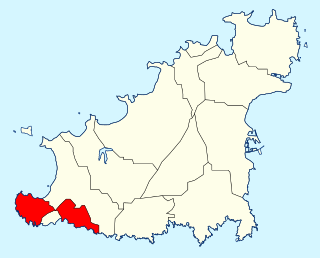
Torteval is the smallest of the ten parishes of Guernsey, one of the western parishes. Its name comes from the Guernésiais words for "twisting valley". The parish is split in two by the parish of St. Pierre du Bois, with the part in the east known as Torteval. The detached peninsula to the west is named Pleinmont-Torteval. It includes the westernmost point in Guernsey, and a nature reserve. The reserve, designed for birds in the 1970s, was to be redeveloped for the Diamond Jubilee of Queen Elizabeth II in 2012.

The British built 15 Guernsey loophole towers at various points along the coast of Guernsey between August 1778 and March 1779 to deter possible French attacks after France had declared itself an ally of the Americans in the American Revolutionary War. Towards the start of the Napoleonic Wars several towers received additional reinforcement in the form of batteries at their bases. Today, 12 towers still survive, three having been destroyed at different times. Two of the survivors, Petit Bôt and Rousse, contain interpretive exhibits that the public may examine.
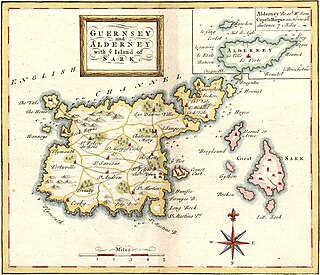
The Braye du Valle is the area between the main Island of Guernsey and Le Clos du Valle, which was a tidal island to the north.
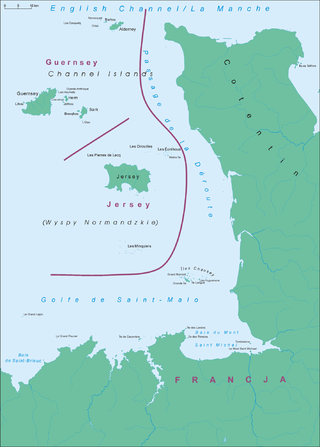
The Channel Islands are a group of islands off the coast of France. The largest island is Jersey, followed by Guernsey, Alderney, Sark, and a number of smaller islands, islets and rocky outcrops. The islands were separated from mainland Europe with rising sea levels in the Neolithic period; thereafter maritime activity commenced.
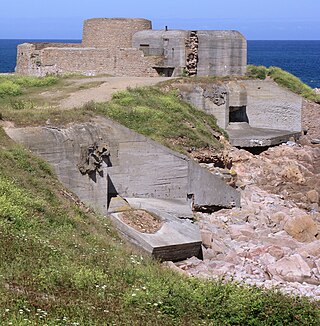
The island of Guernsey has been fortified for several thousand years, the number of defence locations and complexity of the defence increasing with time, manpower and the improvements in weapons and tactics.
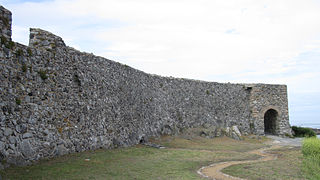
Vale Castle, is a protected building located in the Vale, Guernsey. The original name was "Le Château St Michel", later it became "Château de Val" or "Château de Valle" and is over 1,000 years old. It defends both St. Sampson's harbour at the eastern end of the Braye du Valle, Guernsey, and Bordeaux Harbour.





















